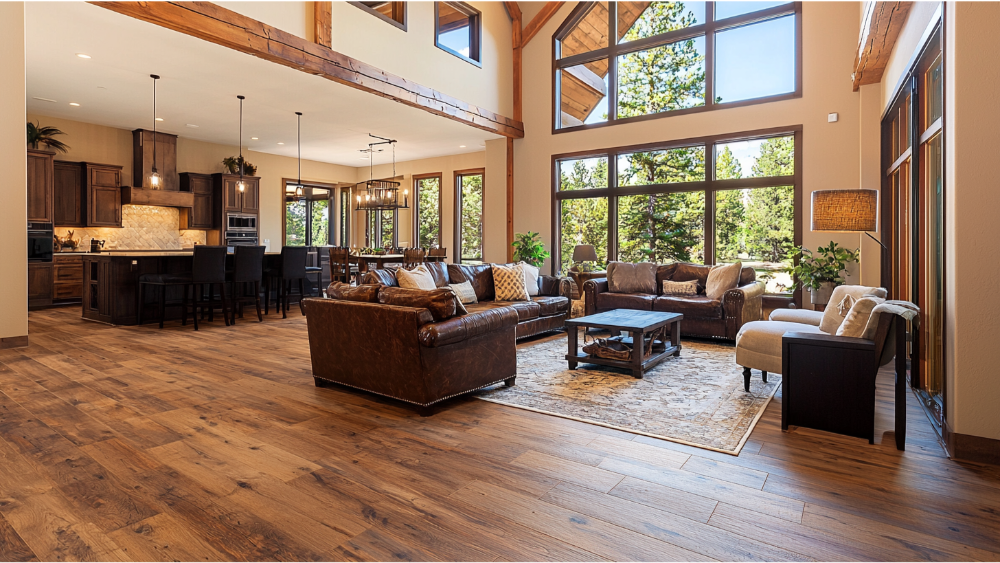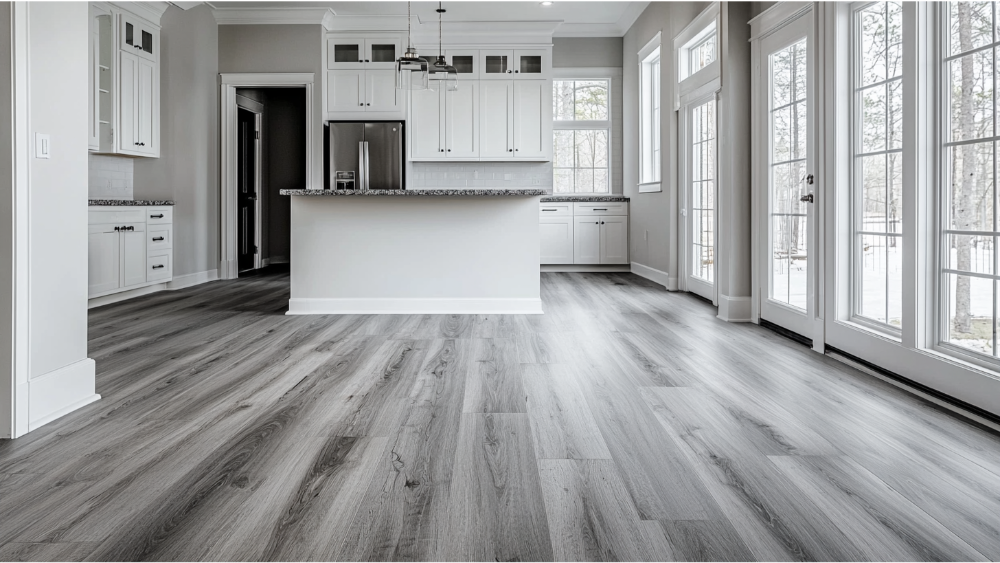Luxury vinyl plank (LVP) flooring is one of today’s most popular flooring options—and it’s easy to see why. Between its impressive durability, stylish design, and unbeatable water resistance, it’s become a favorite among homeowners across Seattle and beyond. But as more families focus on indoor air quality and healthy home environments, one question is being asked more often: is LVP flooring toxic?
At Best Floor Coverings, we believe informed choices lead to better homes. That’s why we’re breaking down everything you need to know about luxury vinyl flooring—from how it’s made to what potential health risks you should watch out for, and how to choose the safest, most non toxic option for your family.
Whether you’re remodeling your entire house or just replacing the flooring in one room, this guide will help you make a smart, confident choice.
What Is Luxury Vinyl Flooring Made Of?
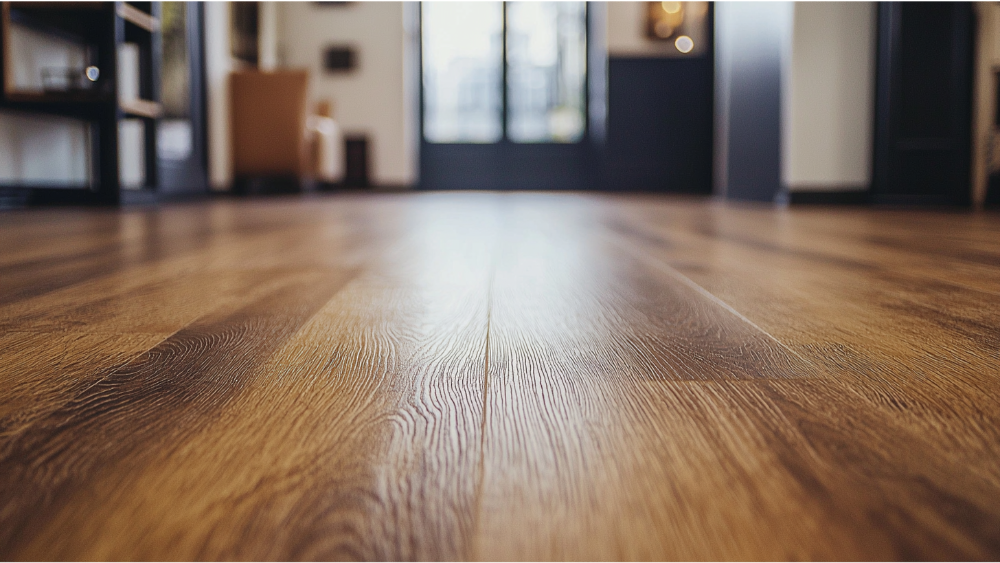
Luxury vinyl planks create a durable, multi-layered option crafted to mirror the natural beauty of materials like hardwood, tile, or even stone—without the high maintenance or price tag. Its construction includes a clear wear layer for durability, a printed design layer for aesthetics, a dense vinyl core for structure and water resistance, and a backing layer for stability.
The key ingredient in most vinyl flooring products is polyvinyl chloride (PVC)—a type of plastic known for flexibility and strength. While this material allows for a highly resilient and attractive option for busy households, it also raises questions due to the presence of vinyl chloride, a known carcinogen used during production.
LVP falls under the broader category of resilient flooring materials, which also includes sheet vinyl, linoleum flooring, and certain types of engineered tile. What sets it apart is its balance of affordability, easy installation, and long-term performance. But like all building materials, not all LVP is created equal.
Understanding the Health Risks of Vinyl and Toxic Flooring
As LVP has grown in popularity, so has the conversation around health risks, environmental toxins, and the safety of synthetic consumer products. Let’s take a closer look at what the research says—and what to watch for when shopping.
Toxic Flooring: What You Should Know About Dangerous Chemicals
Concerns around toxic flooring mostly stem from the potential off-gassing of volatile organic compounds (VOCs). These compounds are emitted as gases from certain materials, especially during the first few weeks after installation.
Common VOCs found in flooring products include formaldehyde, toluene, and benzene—many of which are considered dangerous chemicals or public health hazards by organizations like the EPA and Centers for Disease Control. These emissions can irritate the lungs, trigger allergies, and contribute to long-term respiratory issues, especially in children, older adults, and those with pre-existing conditions.
The good news? Not all LVP off-gasses at high levels. Many modern products are engineered to be low VOC, helping reduce exposure and minimize risk in your home environment.
Phthalates, Human Health, and Prolonged Exposure
Phthalates are a class of plasticizers that make vinyl more flexible—but they’re also controversial. Research has linked prolonged exposure to phthalates with hormonal disruptions, developmental issues, and respiratory symptoms, especially in pregnant women and young children.
Because of growing concerns, many flooring manufacturers now produce phthalate-free vinyl flooring, using safer alternatives like DOTP (dioctyl terephthalate). Choosing these updated flooring materials significantly reduces health concerns associated with long-term exposure.
When shopping, look for products clearly labeled phthalate-free or non toxic, and always ask your flooring expert to explain what’s in the product.
Vinyl Flooring and Heavy Metal Additives
Another concern in some vinyl flooring products is the presence of harmful chemicals like heavy metals—think lead, cadmium, or mercury—especially in products made from recycled vinyl. While often within legal limits, even trace amounts can pose risks with long-term exposure, particularly for children.
To avoid this, we recommend selecting vinyl made from virgin materials and sourced from reputable manufacturersthat disclose their full ingredient lists. Transparent, certified production is one of the best ways to protect your home environment from unwanted chemical exposure.
Comparing LVP to Other Flooring Options
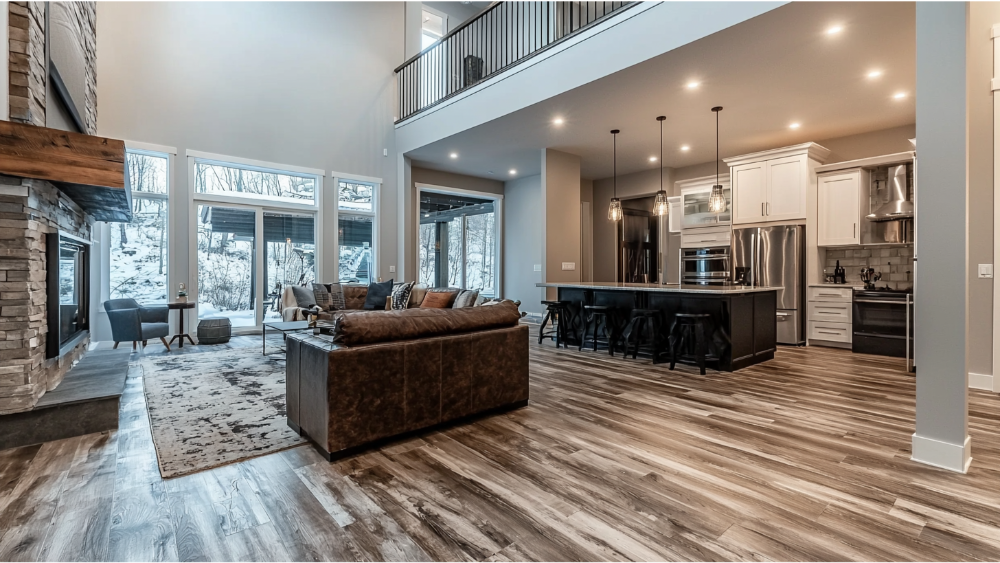
When weighing your options, it’s helpful to compare LVP to other flooring materials to decide what’s right for your lifestyle and health priorities.
Luxury Vinyl Flooring vs. Hardwood Flooring
Hardwood flooring is a timeless, natural material known for its beauty and longevity. Because it doesn’t contain PVC, phthalates, or other synthetic components, many homeowners see it as a safer, more non toxic option. However, it often requires surface treatments, stains, and adhesives—some of which may contain VOCs.
Compared to hardwood, luxury vinyl is more budget-friendly and offers superior water resistance, making it a more viable option for kitchens, bathrooms, and basements.
Carpet Flooring and Indoor Air Quality
Carpet flooring can trap allergens, dust, and chemical residues from adhesives and backings. Many carpets are also treated with flame retardants and stain repellents, which can emit toxic fumes. While soft and cozy, carpet is not always the healthiest choice—especially for those with asthma or allergies.
Linoleum Flooring as a Natural Alternative
Linoleum flooring, made from renewable materials like linseed oil and wood flour, is a highly sustainable and non toxic option. Unlike vinyl, linoleum doesn’t contain PVC or phthalates, and it naturally resists microbial growth. It’s a fantastic alternative if you’re looking for low-emission, eco-friendly floors.
Certifications That Guarantee Low Risk Flooring
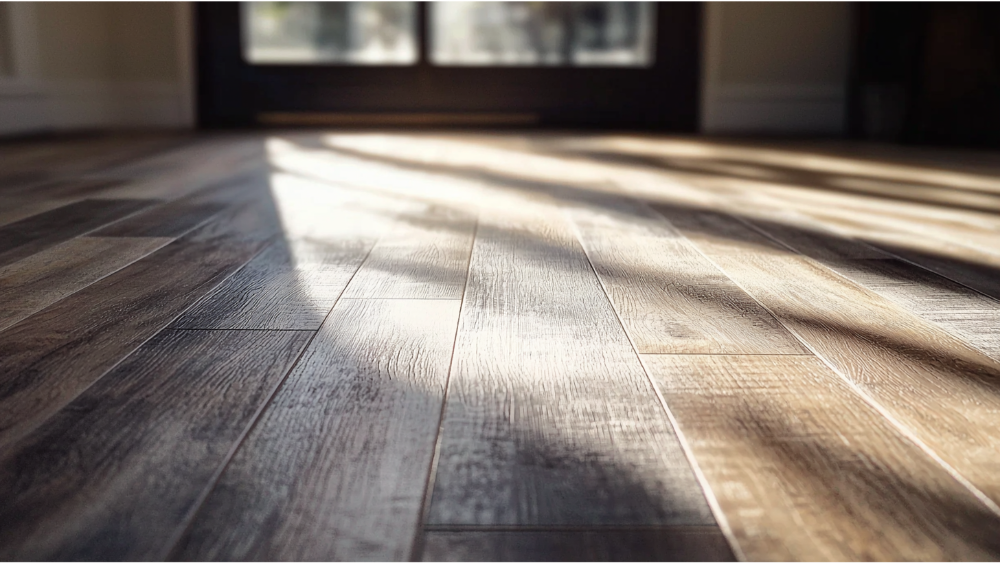
When it comes to flooring products, third-party certifications offer peace of mind. Look for these labels to ensure the flooring you’re choosing has passed numerous tests for safety and low VOC emissions:
FloorScore®: Certifies flooring products meet strict indoor air quality criteria.
GREENGUARD® Gold: Indicates products are certified for use in sensitive environments like schools and healthcare settings.
Assure Certified™: A newer label verifying LVP flooring is made without harmful phthalates or heavy metals.
Certified floors don’t just offer low risk—they help you build a safer, more comfortable space for your family.
Tips to Reduce Exposure to Environmental Toxins
Even the safest flooring materials can emit low levels of chemicals, especially when new. Here’s how to minimize the impact on your home environment:
Increase ventilation during and after installation—open windows and run fans.
Use HEPA air purifiers to capture common VOCs.
Work with experienced pros who use low-VOC adhesives and follow proper procedures.
Ask questions about material sources, ingredients, and certifications.
Avoid installing synthetic flooring in nurseries or bedrooms for pregnant women or those with sensitivities.
Frequently Asked Is LVP Flooring Toxic Questions
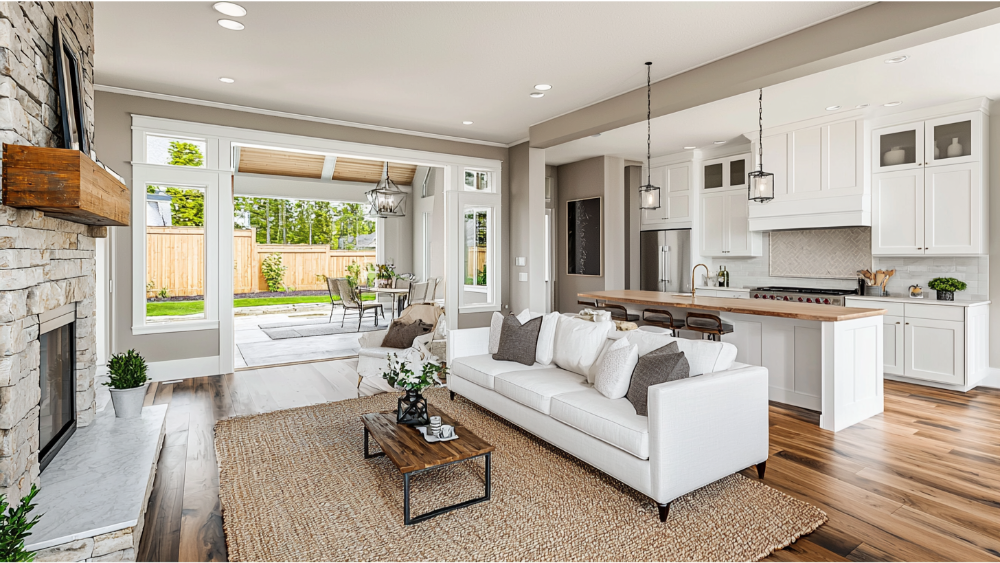
Is vinyl plank flooring toxic?
Vinyl plank flooring is made using vinyl products such as polyvinyl chloride (PVC), which can include additives like phthalates and other toxic materials depending on the manufacturing processes used. While many newer products are designed with non toxic materials and are certified low-VOC, it’s still important to do your research. Choosing LVP from reputable brands and confirming it meets health and safety certifications can help reduce the risk of chemical exposure and protect your home environment.
Can vinyl plank flooring impact indoor air quality?
Yes, vinyl plank flooring can impact indoor air quality, especially during the initial installation period. This is due to off-gassing, a process where volatile organic compounds (VOCs) are released into the air. These emissions can be especially problematic for those who spend extended time indoors or who are sensitive to airborne chemicals. Fortunately, many vinyl plank flooring options are now available with low-VOC ratings, making them safer for families and pets.
How long do VOCs from vinyl plank flooring last?
Off-gassing of VOCs typically peaks in the first few weeks after installation. After that, the emission levels drop significantly, especially with good ventilation. However, long-term exposure to VOCs from lower-quality flooring can still be a significant problem, particularly for children, seniors, or those with respiratory conditions. Opting for certified low-VOC products helps reduce these risks.
Are there specific health risks associated with vinyl plank flooring?
Yes, depending on the quality of the materials and the chemicals used during production, there may be potential health risks. Some phthalates used in vinyl have been classified as endocrine disruptors, which can interfere with hormonal function and are especially concerning for pregnant women and young children. That’s why choosing non toxic materials and avoiding toxic materials in flooring is so critical for a healthy home.
How does vinyl plank compare to wood floors in terms of safety?
Wood floors, especially unfinished or naturally treated ones, tend to have fewer synthetic compounds, which means they typically release fewer VOCs. However, some hardwood finishes or adhesives can still emit VOCs. On the other hand, modern vinyl plank flooring can be a safe option if you choose low-VOC, phthalate-free products made with non toxic materials. It all comes down to the specific manufacturing processes and certifications behind each product.
Are there specific coatings on vinyl flooring that help reduce toxicity?
Yes, some vinyl products feature protective coatings, such as aluminum oxide, that enhance durability and limit chemical wear and tear. While aluminum oxide is commonly used in wood floors, it is also increasingly found in high-quality LVP to help minimize scratches and reduce the release of surface particles that could affect air quality.
How do I ensure I’m buying a safe vinyl plank flooring product?
To ensure you’re choosing a safe product:
Look for certifications like FloorScore® and GREENGUARD® Gold that test for chemical emissions.
Select flooring labeled as low-VOC and phthalate-free.
Choose from brands known for transparent manufacturing processes.
Ask your flooring expert whether the product contains toxic materials or any known endocrine disruptors.
Why is indoor flooring safety such a big concern today?
As people spend more time indoors, the materials used in flooring have come under greater scrutiny. Poor indoor air quality caused by toxic materials in flooring is now recognized as a significant problem for public health. Families today are prioritizing non toxic materials in their homes—not just for aesthetic appeal, but for peace of mind.
Final Thoughts: How to Choose the Right Flooring for Your Health and Home
Luxury vinyl flooring can absolutely be a safe, attractive option—as long as you know what to look for. By choosing certified, non toxic, and low VOC flooring, and working with trusted professionals, you can dramatically reduce the risk of dangerous chemicals in your home.
At Best Floor Coverings, we make that process easy. We source LVP and LVT flooring from reputable manufacturers, and our expert team walks you through every step—from product selection to professional installation. Whether you’re looking for vinyl, hardwood, tile, or eco-friendly flooring options, we’ll help you find the perfect solution for your lifestyle, budget, and health goals.
Want to learn more or see samples in person?
Schedule your free in-home consultation today and experience the shop-at-home difference with Best Floor Coverings. Let’s find a floor that fits your style—and supports your health.


